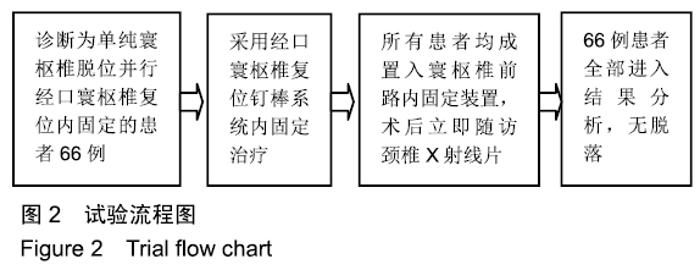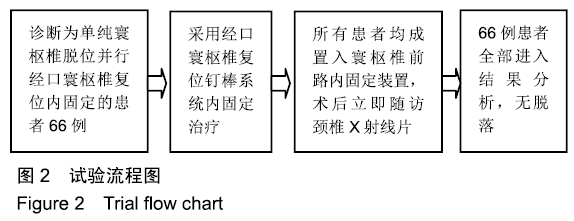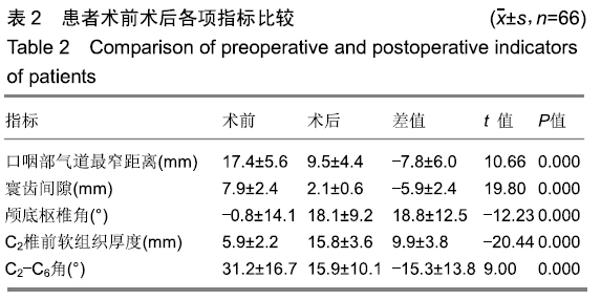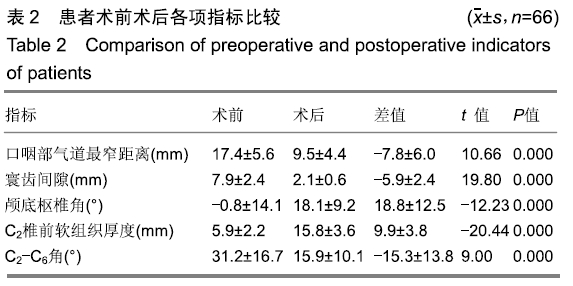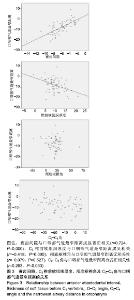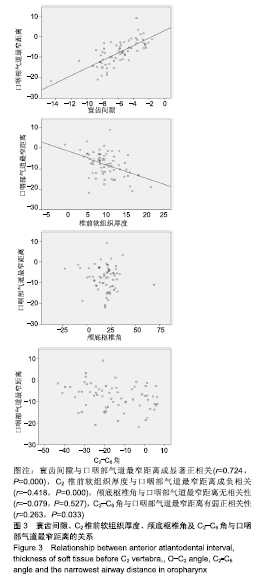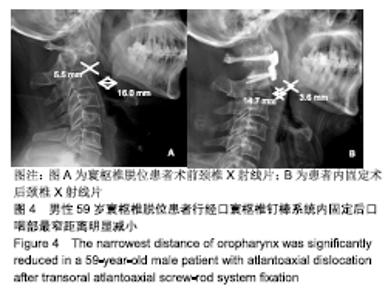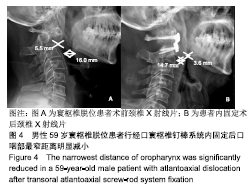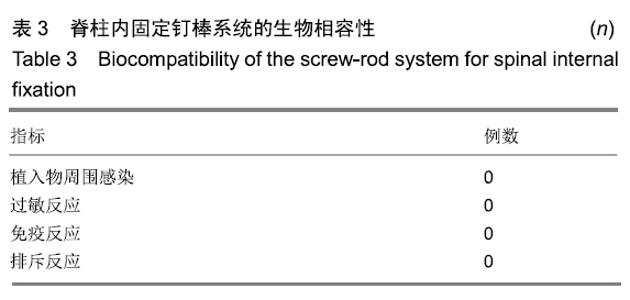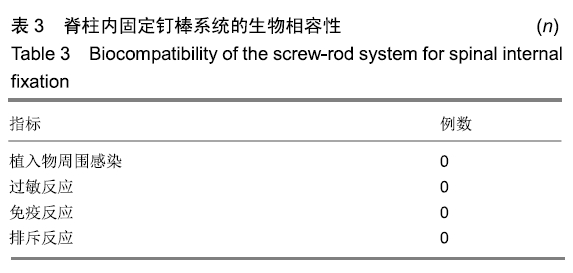[1] YIN QS, LI XS, BAI ZH, et al. An 11-year review of the TARP procedure in the treatment of atlantoaxial dislocation. Spine (Phila Pa 1976), 2016,41(19):E1151-E1158.
[2] LI Z, LI G, CHEN C, et al. Risk factors for dysphagia after anterior cervical spine surgery. Orthopedics.2018;41(1):e110-e116.
[3] IZEKI M, NEO M, ITO H, et al. Reduction of atlantoaxial subluxation causes airway stenosis. Spine (Phila Pa 1976). 2013;38(9):E513-E520.
[4] BATTAGEL JM, JOHAL A, L'ESTRANGE PR, et al. Changes in airway and hyoid position in response to mandibular protrusion in subjects with obstructive sleep apnoea(OSA). Eur J Orthod.1999;21(4):363-376.
[5] FURUYA J, TAMADA Y, SUZUKI T. Effect of mandibular position on three-dimensional shape of the oropharynx in seated posture. J Oral Rehabil.2012;39(4):277-284.
[6] ISONO S, TANAKA A, ISHIKAWA T, et al. Sniffing position improves pharyngeal airway patency in anesthetized patients with obstructive sleep apnea. Anesthesiology. 2005;103(3):489-494.
[7] MUTO T, TAKEDA S, KANAZAWA M, et al. The effect of head posture on the pharyngeal airway space (PAS). Int J Oral Maxillofac Surg. 2002;31(6):579-583.
[8] HASEBE D, KOBAYASHI T, HASEGAWA M, et al. Changes in oropharyngeal airway and respiratory function during sleep after orthognathic surgery in patients with mandibular prognathism. Int J Oral Maxillofac Surg. 2011;40(6):584-592.
[9] RILEY RW, POWELL NB, GUILLEMINAULT C, et al. Obstructive sleep apnea syndrome following surgery for mandibular prognathism. J Oral Maxillofac Surg. 1987;45(5):450-452.
[10] KAWAMATA A, FUJISHITA M, ARIJI Y, et al. Three-dimensional computed tomographic evaluation of morphologic airway changes after mandibular setback osteotomy for prognathism. Oral Surg Oral Med Oral Pathol Oral Radiol Endod. 2000;89(3):278-287.
[11] OTA M, NEO M, AOYAMA T, et al. Impact of the O-C2 angle on the oropharyngeal space in normal patients. Spine. 2011;36(11):E720-E726.
[12] TAGAWA T, AKEDA K, ASANUMA Y, et al. Upper airway obstruction associated with flexed cervical position after posterior occipitocervical fusion. J Anesth. 2011;25(1):120-122.
[13] HONG J, LIM S. Dysphagia after occipitocervical fusion. N Engl J Med. 2017;376(22):e46.
[14] MIYATA M, NEO M, FUJIBAYASHI S, et al. O-C2 angle as a predictor of dyspnea and/or dysphagia after occipitocervical fusion. Spine (Phila Pa 1976). 2009;34(2):184-188.
[15] KANEYAMA S, SUMI M, KASAHARA K, et al. Dysphagia after occipitothoracic fusion is caused by direct compression of oropharyngeal space due to anterior protrusion of mid-cervical spine. Clin Spine Surg. 2017;30(7):314-320.
[16] MORIZANE K, TAKEMOTO M, NEO M, et al. Occipital and external acoustic meatus to axis angle as a predictor of the oropharyngeal space in healthy volunteers: a novel parameter for craniocervical junction alignment. Spine J. 2018;18(5):811-817.
[17] IZEKI M, NEO M, TAKEMOTO M, et al. The O-C2 angle established at occipito-cervical fusion dictates the patient’s destiny in terms of postoperative dyspnea and/or dysphagia. Eur Spine J.2014;23(2):328-336.
[18] TIAN W, YU J. The role of C2-C7 and O-C2 angle in the development of dysphagia after cervical spine surgery. Dysphagia. 2013;28(2):131-138.
[19] YOSHIDA M, NEO M, FUJIBAYASHI S, et al. Upper-airway obstruction after short posterior occipitocervical fusion in a flexed position. Spine. 2007;32(8):E267-E270.
[20] REDLUND-JOHNELL I. Upper airway obstruction in patients with rheumatoid arthritis and temporomandibular joint destruction. Scand J Rheumatol. 1988;17(4):273-279.
[21] HELLSING E. Changes in the pharyngeal airway in relation to extension of the head. Eur J Orthod. 1989;11(4):359-365.
|
